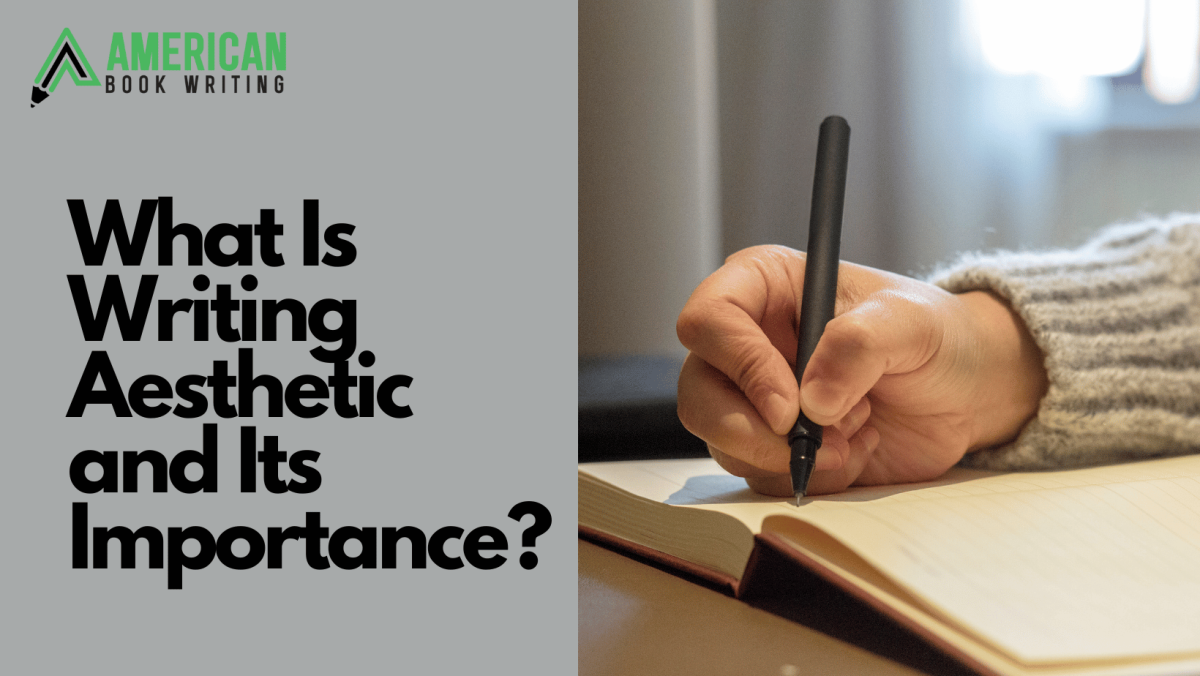Writing
Press The Play Button On The Audio To Listen Complete Article!
Writing aesthetic refers to a writer’s unique style, tone, and visual appeal. It is about how a writer uses language, structures sentences and paragraphs, and conveys emotions and themes. Your personal experiences, values, and creative choices must be reflected in your writing.
Factors that Influence Writing Aesthetic
A writer’s writing aesthetic is influenced by various things, including:
- Personal experiences, style, and preferences
- Education and knowledge
- The genre or type of writing
- The intended audience
- Cultural and social factors
Aesthetic Writing: What Does That Mean?
An author’s writing aesthetic is the mood or feeling they want to create in a piece of writing through the use of literary devices like images, mood, and tone.
We can talk about a certain work’s style, an author’s style (for example, if a work is called “Kafkaesque,” it means it has elements of Kafka’s nightmare stories), or even a whole literary movement, like Dandyism or Romanticism.
The best way to explain writing style might be to think of an author’s voice or brand. Did you ever feel like you were reading something by Hemingway, or at least something that sounds like his writing? The writing style in works like his could be called “Hemingway-esque.” Reading something that speaks to your mind is a big part of writing. Together with the plot and major story, it’s what makes them feel something that keeps them turning the pages. How you write is another thing that sets you apart from other writers.
Importance of Writing Aesthetic
Eliciting Emotions:
A strong writing aesthetic has the power to evoke emotions in readers. For instance, it can make readers laugh, cry, or feel scared. This can create a deeper connection with the audience and help writers convey their intended message more effectively.
Creating Engagement:
It can also help writers engage with their audience and effectively communicate their ideas. When readers enjoy a writer’s style, tone, and use of language, they are more likely to read it again and talk about it with others. This can lead to higher readership and more success for the writer. Additionally, it’s important for writers to know how to cite an article properly to give credit to their sources and maintain credibility.
Establishing Author Brand Identity:
Writing aesthetics is an important factor in establishing a writer’s brand identity. It helps to differentiate their work from others in the same genre or category and can become a defining characteristic of their writing style. This creates a sense of recognition for a writer’s work and facilitates connection with readers.
Building a Connection with the Audience:
It can also help writers create a connection with their readers. Readers who resonate with and enjoy a writer’s style are more likely to become dedicated fans. This can create a relationship that goes beyond the writing and leads to a stronger connection with the writer on a personal level.
Examples of Writing Aesthetic:
Ernest Hemingway:
It is noted for his unusual writing style. He writes in a stream-of-consciousness style, disregarding overbearing words. In his work, there is no over-explanation of topics or subtexts. His writing style may seem basic, yet underneath that surface are profound layers.
Nicholas Sparks:
Nicholas Sparks is a contemporary author who fits this description. The love tales that Sparks creates are achingly sad. A bittersweet, nostalgic conclusion is acceptable to the author since he focuses on the characters’ feelings rather than the storyline. When you need to cite multiple authors in MLA style for works like Sparks’, it’s important to follow the guidelines for accurate and proper citation. His style is deeply felt and lovely despite its many melancholy undertones.
Shakespeare:
The use of suspense as a literary device is not limited to fiction. Readers are eager to find out since they don’t know what will happen. Therefore, readers will be interested in the story and delighted by the well-crafted tension. Suspense is a common element in crime and mystery fiction. Similarly, works of art such as Shakespeare’s Macbeth wonderfully convey tension and suspense.
Create A Writing Aesthetic: Learn How to Identify Your Writing Style
You now know how to find your writing aesthetic. You’ve also looked at examples of good writing. Now is the time to go over some tips that will help you improve the style of your writing:
Read The Work of Your Favorite Author
It is always a good idea to read and think about the work of your favorite authors, but it is especially helpful when trying to find your writing style.
Looking for a writer whose work you like and who makes you feel something. Learn the author’s writing style and think about what you like about it and how it makes you feel while reading it. Is it their language, tone, symbols, or the ideas they keep returning to? Before you start writing, think about what you want to show. Don’t try to be the artist you think you should be. Instead, figure out who you are; people will admire you.
Write Every Day:
Regular writing is the best way to improve the quality of your writing. You might never find the right words if you keep putting it off. When you say something, you don’t know if it’s right until you hear it. You can improve your skills by writing a few lines every day.
Use All Five of Your Senses:
To succeed as a writer, you must be interested in everything about it. The job can’t be done if you don’t put your heart into it. Also, you need to make the space comfortable for your readers if you want them to stay linked. Utilize every sense and stay alert while you write. What you see, hear, touch, taste, smell, and the most important thing is what you feel. For effective practice, consider using writing prompts for students. You will find that everything is linked in some way during this process. Your writing style is how you get the feeling across to the reader.
Change and Rewrite
One of the most important steps in improving your writing style is editing. Change or eliminate any parts that don’t fit the style you’re building on.
Even though you should know what you want from the start, it’s hard to stay in the right mood for the whole time it takes to finish your work. You will tire of working on your style and letting it slip because it takes work to create an aesthetic. But if you pay close attention to it when you edit, you can keep the style of your work.
Conclusion:
A distinct writing aesthetic can set a writer’s work apart from others in the same genre or category. This can help writers get noticed by publishers, editors, and readers, leading to more opportunities and success.
FAQs:
How can a professional book writing service help develop a distinct writing aesthetic for an author?
Professional book writing services often employ experienced writers who understand the nuances of crafting a unique writing aesthetic. These services work closely with authors to identify their voice, style, and thematic preferences, helping to develop a compelling and distinctive writing aesthetic for their projects.
What role does writing aesthetics play in the selection process for book publishers?
It plays a significant role in the selection process for book publishers. Publishers look for manuscripts with a unique and compelling writing style that stands out in the market. A well-defined writing aesthetic enhances a book’s marketability and increases its chances of being accepted by publishers.
Why is writing aesthetics important in ghostwriting?
Writing aesthetics is crucial in ghostwriting company as it ensures the final product aligns with the client’s preferences and brand image. A consistent and appealing writing aesthetic helps maintain the authenticity of the client’s voice, making the content more engaging for the target audience.




